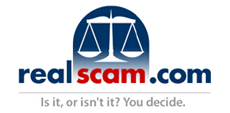Over the last ten years, students were hit with record tuition hikes. In-district and out-of-district Texans saw a 73% and 94% hike, respectively. Out of state students saw their rates jump 33%, with a 60% increase for international students.
Despite enrollment steadily declining every year since 2010, DCCCD officials continued to expand their
massive budget. Most taxpayers are unaware that the separately governed entity spends more money than what Dallas County itself
collects in property taxes.
A cursory review of the college’s
audited financial report reveals two glaring problems. The first is an excessive number of academic facilities.
In anticipation of increased enrollment that never fully materialized, elected officials aggressively added 22 new academic buildings after 2008. But since 2010, enrollment has continued to decline every year.
The second problem is one emblematic of government institutions—an ever-increasing budget largely unrelated to the educational services needed, driven in part by a massive increase in non-instructional positions.
While instructional spending itself rose twice as fast as student enrollment since 2006 (36% vs 19%), spending for non-instructional staff grew three times faster than enrollment (62%). In fact, after initially reducing administrative staff after enrollment began to decline, those staffing reductions were eventually reversed.
Today, the total number of non-teaching staff nearly exceeds the previous high in 2009, just before student enrollment peaked.
Critics are left wondering whether DCCCD’s board believes its mission is that of an employment or educational institution.
With Bill Metzer as the only dissenting vote, the board has voted to raise property tax rates 52% since 2006. The board’s insistence on raising taxes on a larger tax base has resulted in them collecting
twice as much tax revenue today as compared to 2006.
Remember, that’s on top of doubling tuition rates for Texas students.
District officials will point to “stagnant funding” from the state, which only rose eight percent over the same period. But the government’s own financial statements disprove this false claim.
Total revenue collected by DCCCD including federal and state subsidies, tuition, and tax revenue has increased nearly three times as fast as student enrollment (57% versus 19%). The discrepancy becomes all the more dramatic after enrollment began to fall in 2010, as the district’s budget continued to grow almost every single year.
Dallas County voters who care about taxpaying families, struggling businesses, and low-income students would be wise to vote in May’s election. DCCCD’s trustees serve six-year terms, so a missed opportunity in 2016 will all but guarantee more of the same—skyrocketing spending, property taxes, and tuition.


 Thanks:
Thanks:  Likes:
Likes:  LMAO:
LMAO:  Dislikes:
Dislikes:  Ignorant:
Ignorant:  Moron:
Moron: 





 Reply With Quote
Reply With Quote
Bookmarks